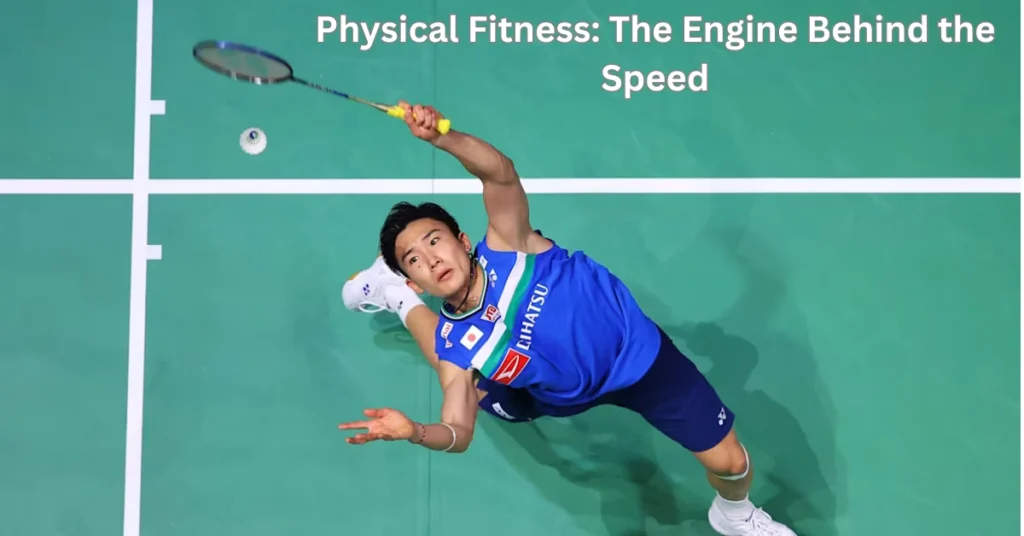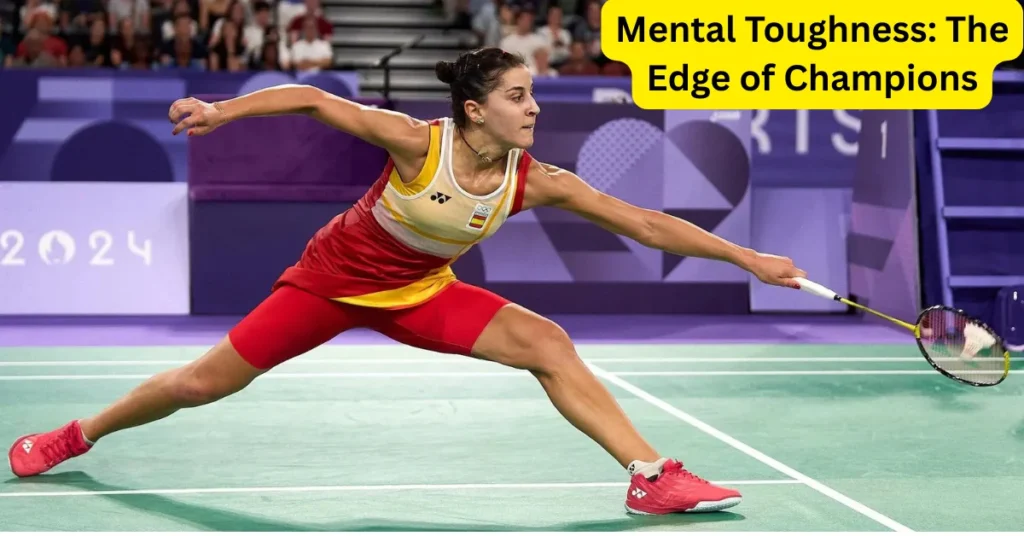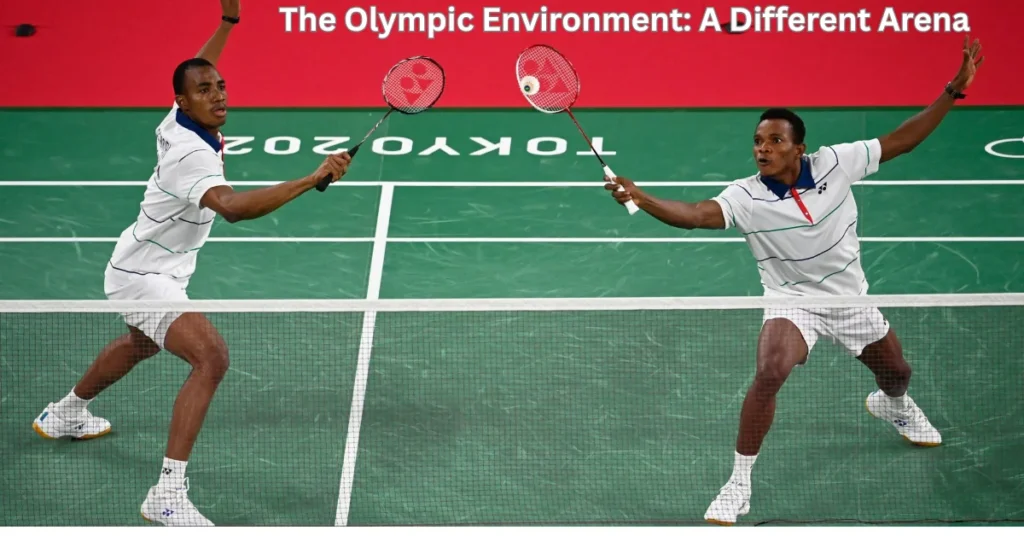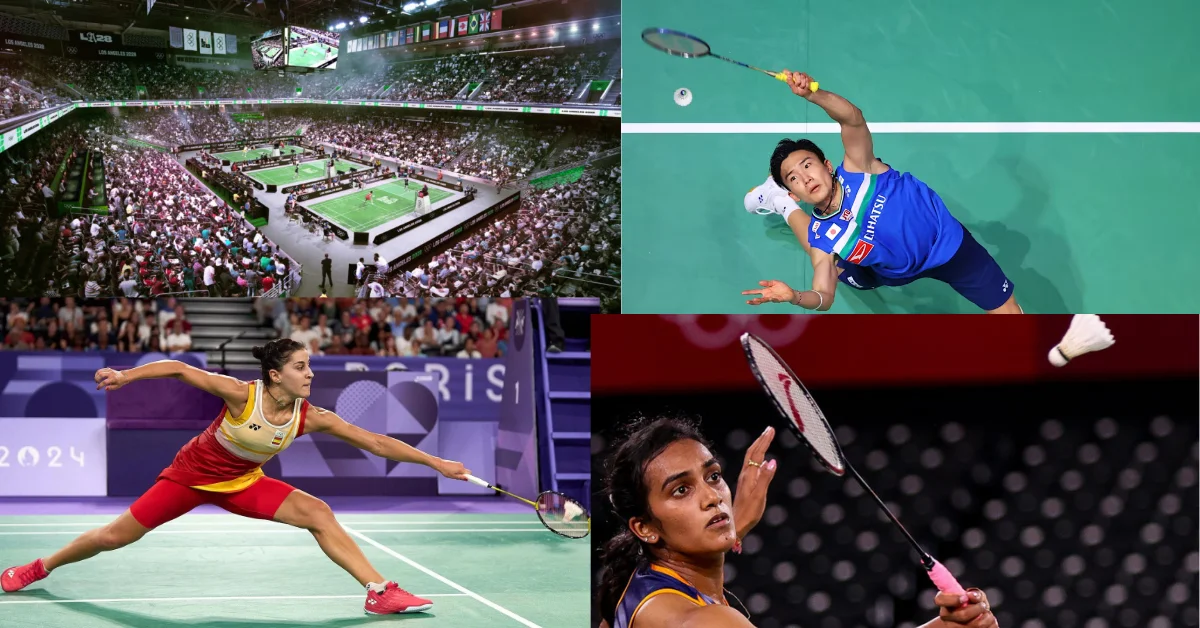badminton Olympic sport
Every four years, the world tunes in to watch the Olympic Games, In today’s article, we will tell you about badminton Olympic sport , an extraordinary display of human strength, endurance, skill, and heart. In the dazzling glitz of the Games, badminton often goes under the radar. But for those who truly understand the sport, Olympic badminton isn’t just a backyard pastime or casual gym class activity.

It’s a fierce, fast-paced battle where physical stamina, strategic mastery, and mental grit all come into play. Winning an Olympic gold medal in badminton isn’t just about swinging a racket—it’s about a lifestyle, a relentless pursuit of perfection, and an unyielding commitment to becoming the best in the world.
The Rise of Olympic Badminton
Badminton made its Olympic debut at the 1992 Barcelona Games, though it had long been popular in Asia and parts of Europe. Since then, the sport has evolved significantly, becoming one of the most watched Olympic events in countries like China, Indonesia, South Korea, Malaysia, Denmark, and India.
The modern game is a high-speed chess match, with shuttlecocks traveling at over 300 km/h, players covering vast areas of court space in seconds, and split-second decisions determining the difference between victory and defeat. But behind the scenes of these explosive rallies and graceful dives lies a journey of sacrifice and superhuman preparation.
Years of Preparation Before the Podium
Winning Olympic gold in badminton doesn’t begin with the Olympic year—it starts a decade earlier. Most gold medalists begin training in their early childhood. By the time they reach their twenties, they’ve already committed thousands of hours to training. According to the widely cited “10,000-hour rule,” it takes that much deliberate practice to master a sport. badminton Olympic sport players often exceed that.
Training routines start as early as 5 a.m., with fitness drills, on-court practice, strength and conditioning, mental exercises, and strategy sessions filling the day. Players train six days a week, sometimes twice a day, gradually sharpening every aspect of their game.
Nutrition is monitored. Sleep is regulated. Social lives are limited. Holidays are rare. Injuries are inevitable. And through it all, there’s one goal: Olympic gold.
Physical Fitness: The Engine Behind the Speed

To the untrained eye, badminton may look easy. But ask any professional, and they’ll tell you—badminton is one of the most physically demanding sports in the world.
Speed and agility are paramount. Players must move from baseline to net and side-to-side in milliseconds. A single rally can last over a minute and require more than 20 full-speed sprints. Over the course of a match, players may run several kilometers—mostly in explosive bursts.
Strength and power are equally vital. Smashes, jumps, and lunges demand powerful legs, strong cores, and dynamic upper body coordination. badminton Olympic sport players can jump smash with astonishing vertical leaps, sending the shuttle hurtling downward at terrifying speeds.
Endurance is what keeps a player sharp through three grueling games that can last up to an hour. Cardiovascular fitness must be elite—not just to keep going, but to stay mentally alert through fatigue.
Recovery routines involving physiotherapy, ice baths, massage, and stretching are essential. At the Olympic level, maintaining the body is just as important as training it.
Strategy and Tactics: The Brain Game
Physicality gets you in the door, but strategy wins you the medal. badminton Olympic sport is a mental war zone, where players must read opponents, adapt tactics, and execute plays under enormous pressure.
Every match is different. Some opponents are defensive, forcing long rallies. Others are attackers, always looking to finish quickly. The best players develop tactical versatility—they can play slow and fast, patient and aggressive.
Shot selection is like programming a chess engine. Do you drop the shuttle softly near the net? Drive it flat across the court? Smash it down the line? Deception is key. Faking one shot and playing another can win crucial points.
Game plans are tailored to each opponent. Coaches and analysts study hours of video to identify weaknesses: a slow backhand, poor reaction on the net, hesitation under pressure. Then they design plays to exploit those gaps.
And in the middle of it all, players must make split-second decisions, adjust mid-match, and stay composed when the momentum swings.
Mental Toughness: The Edge of Champions

At the Olympic level, all players are technically skilled and physically gifted. The difference between a medalist and a quarterfinalist often lies in the mind.
Pressure at the Olympics is unlike anything else. Years of work come down to a few matches. A single error can cost a point, a game, a medal—or a dream.
Players must learn to manage stress, expectations, and emotions. Sports psychologists work with athletes to develop routines, breathing techniques, visualization skills, and mental resilience.
Mental toughness also means rebounding from setbacks. Losing a game doesn’t mean losing the match. Champions reset quickly, re-focus, and dig deeper.
Confidence, too, is vital. Believing in your training, your tactics, and yourself—even when the score is against you—can shift the tide of a match.
It also needs:- The Top 10 Badminton Players Dominating the World with photos in 2025
The Olympic Environment: A Different Arena

The Olympics are not like any other tournament. The stakes are higher, the crowds are louder, and the pressure is monumental. Even seasoned world champions can falter under the Olympic spotlight.
The athletes stay in the Olympic Village, a melting pot of energy and distraction. Media coverage is intense. National pride is at its peak. And unlike regular tour events, the Olympics come only once every four years. There’s no second chance next month.
Coaches prepare athletes specifically for this environment. Simulated pressure drills, mock interviews, and crowd noise training are all used to help players stay in the zone when it counts most.
Key Traits of Olympic Gold Medalists
What separates gold medalists from the rest? Several recurring traits emerge when you study champions like Lin Dan, Chen Long, Carolina Marín, Viktor Axelsen, and Tai Tzu-ying.
- Unstoppable dedication—true champions keep grinding when the world slows down and keep going long after everyone else has called it a day.
- Adaptability – They evolve their games, learn from losses, and innovate constantly.
- Focus – During matches, they enter a “flow state,” fully absorbed in every shot, every moment.
- Confidence under pressure – They thrive in big moments, often saving their best for the highest stages.
- Love for the game – Passion fuels the grueling journey. Without it, burnout is inevitable.
Stories That Inspire
Olympic badminton history is full of inspiring stories that reflect what it truly takes to win gold.
Take Lin Dan, widely regarded as the greatest badminton player of all time. His path to two Olympic golds (Beijing 2008, London 2012) was paved with unrelenting training, mental toughness, and an iron will. Nicknamed “Super Dan,” he combined flair, strategy, and physical dominance to conquer the sport.
Or consider Carolina Marín, the Spaniard who defied the Asian dominance in women’s singles to win gold at Rio 2016. Coming from a country with little badminton tradition, she trained with intensity and single-minded focus, becoming known for her emotional fire and mental strength.
Then there’s Viktor Axelsen, who took gold at Tokyo 2020 (held in 2021) with clinical precision and supreme athleticism. After years of playing second fiddle to Asian stars, he transformed his game, overcame injuries, and reached the peak of his career on the Olympic stage.
Each of these champions shows a different path—but the destination was the same: a place at the top of the Olympic podium.
The Team Behind the Medal
The athlete may be the one holding the gold medal, but that victory is built on the shoulders of many—coaches, trainers, physios, nutrition experts, mental coaches, practice partners, and the unwavering support of family. Each team member plays a role—designing training programs, managing injuries, analyzing opponents, and providing emotional support.
The support system is essential. It keeps athletes grounded, focused, and ready for the enormous challenge of Olympic success.
Conclusion
Friends, in today’s post you learned about badminton Olympic sport . To a simple spectator, badminton at the Olympics may seem like a simple game of rallies and reflexes. But for athletes who want to win a gold medal, it is a life-defining journey. It requires a high level of fitness, unwavering dedication, sharp tactical thinking and a strong mental game.
It’s early mornings, long travel days, brutal matches, heartbreaking losses, and glorious wins. It’s about falling and rising again. It’s about silence in the locker room before the final, and the roar of a nation after the last point.
So the next time you watch Olympic badminton, look beyond the speed and skill. See the years of sacrifice, the brilliance of strategy, the depth of emotion. Because winning a gold medal in badminton isn’t just a victory—it’s the culmination of a lifetime’s pursuit of excellence. How did you like the information given by us, please tell us by commenting.
Thank you very much
